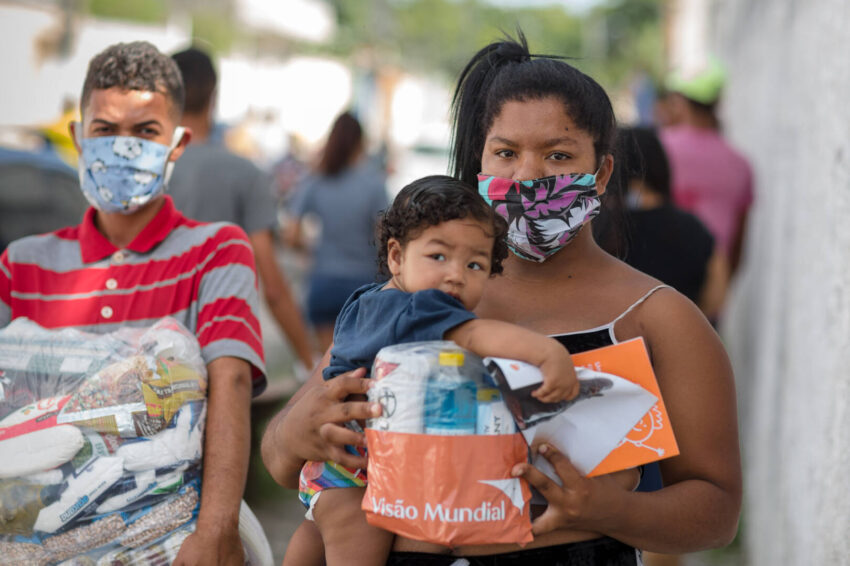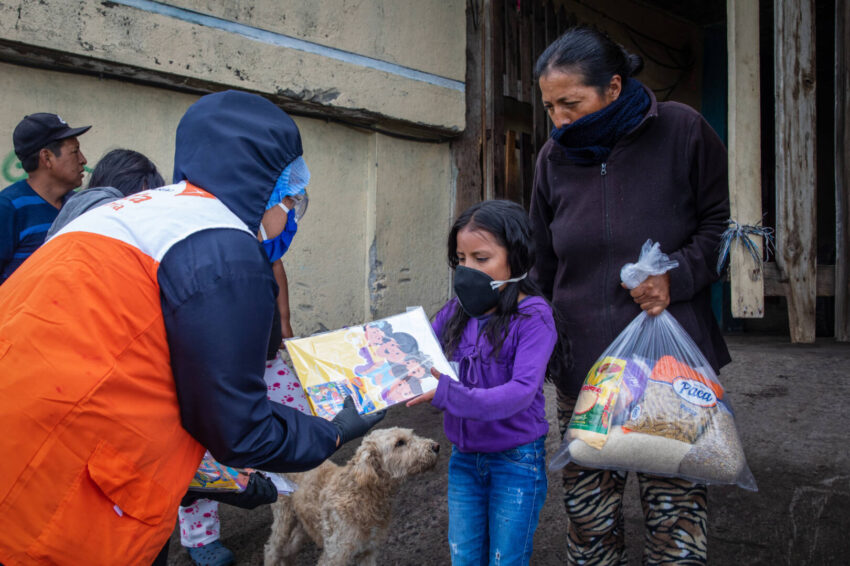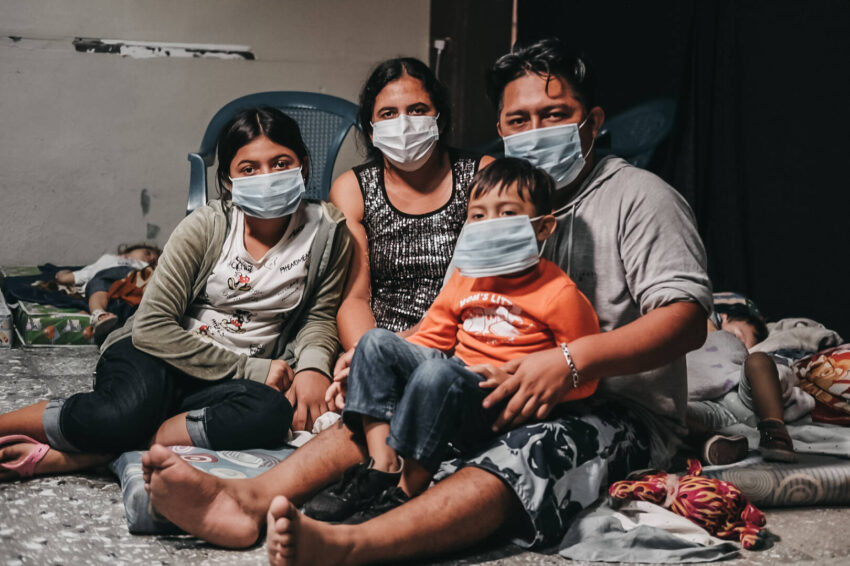Disasters — natural, human-caused, and complex emergencies and refugee crises — delivered a turbulent blow to the world in 2020.
Around the world, World Vision works to protect the well-being of children and their families affected by all types of disasters — from the COVID-19 pandemic and civil wars to hurricanes and destructive locust infestations. In 2020, we adapted our work worldwide, remaining responsive and agile to meet the needs of vulnerable children.
“The complexity of the pandemic and its secondary impacts on all aspect[s] of the lives of children is overwhelming. And other emergencies did not stop because of COVID-19 — hurricanes, explosions, hunger, and insecurity continued,” said Erica Van Deren, senior program manager for World Vision’s humanitarian and emergency affairs in 2020. “Through all of this, by God’s grace and under God’s guidance, World Vision has been able to respond.”
Learn about eight of the world’s top disasters in 2020 and how World Vision responded — and continues to respond — to care for millions of children and their families. Please join us in prayer for people affected by these major tragedies.
The COVID-19 pandemic
Within hours of the World Health Organization’s declaration of the COVID-19 pandemic on March 11, 2020, World Vision launched its largest-ever global emergency response.
World Vision’s global COVID-19 emergency response reached at least 81 million vulnerable people — including over 35 million children — in 70 countries, as last reported on April 29, 2022.
Our global COVID-19 response focused on four key objectives: scaling up prevention, strengthening healthcare systems and workers, supporting affected children, and advocating for vulnerable children’s care in areas of weak health systems.
In the United States, World Vision’s U.S. Programs distributed more than 86,200 Family Emergency Kits, serving over 321,700 people since the start of the pandemic. We also partnered with a network of over 1,300 churches to distribute 3.6 million Fresh Food Boxes. These helped nearly 14.3 million people between May 2020 and May 2021.
In each of our sponsorship communities worldwide, we worked with community partners to keep children and families safe.
Pray for people affected by pandemic effects: Almighty God, we know that everything is in Your sovereign control. We ask that You stop COVID-19 from evolving. Merciful God, we pray for all who suffer from COVID-19. We ask for Your guidance as nations continue to carry out their plans to control the spread of new infections.
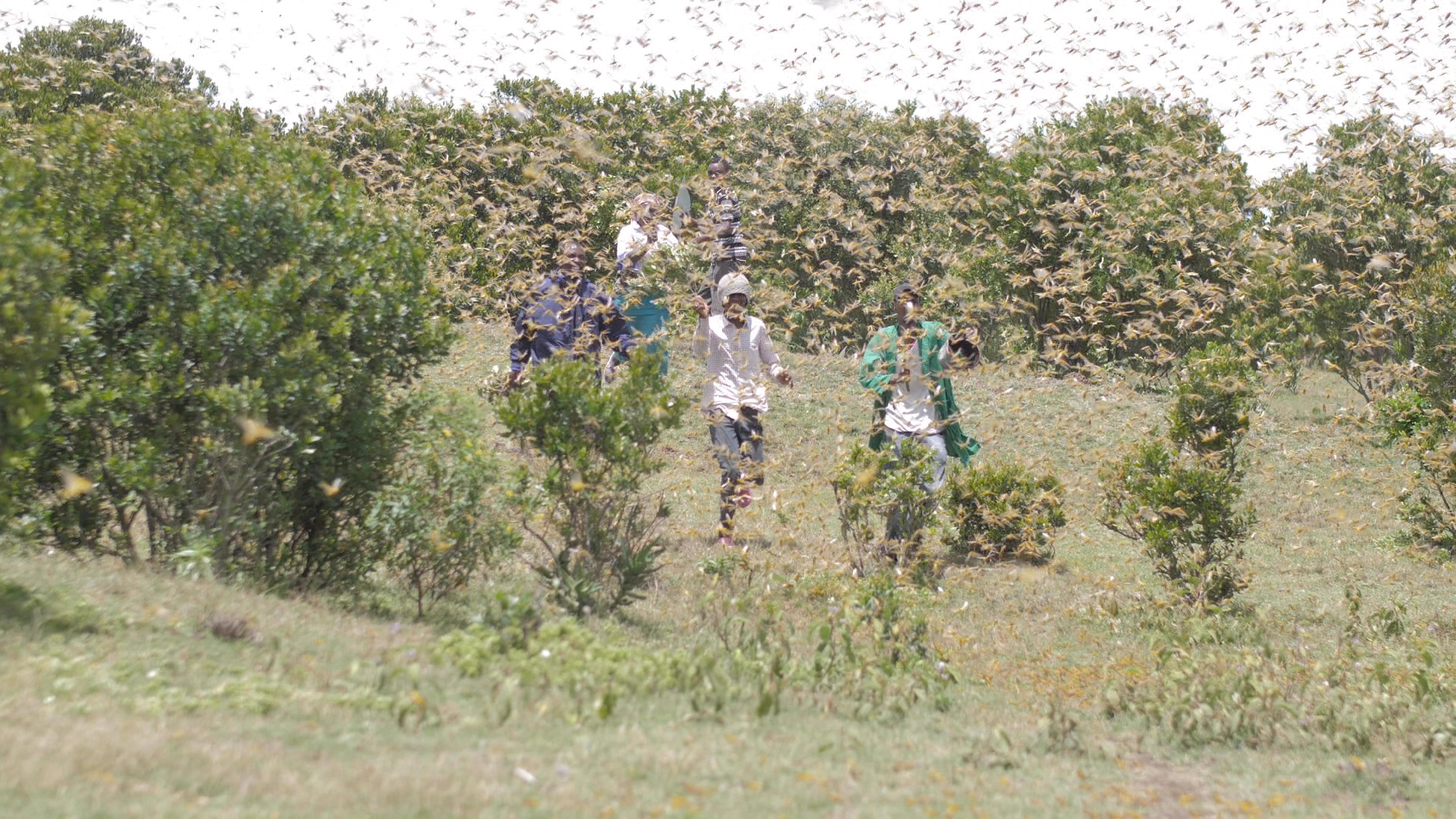
Locust swarms and hunger in Africa
Swarms of desert locusts, the most destructive migratory pest in the world, devoured large swaths of crops and grasses meant for people and livestock in Eastern Africa.
This was the worst infestation in decades in parts of Djibouti, Ethiopia, Eritrea, Kenya, Somalia, Sudan, and Uganda. It also affected crops in nearby South Sudan and Yemen. The locusts threatened food security throughout Africa, where 51.2% of people faced moderate or severe acute food insecurity prior to 2020, according to the United Nations Food and Agriculture Organization.
Facing the worst locust outbreak in over 25 years, Somalia declared a national emergency. Many communities were still recovering from the prolonged drought from 2017, followed by severe flooding in 2019, and a deterioration of food security.
World Vision distributed essential emergency assistance to communities affected by the locust invasion in Ethiopia, Kenya, Somalia, Sudan, and South Sudan. In addition, we distributed seeds to replenish destroyed food crops and regenerate damaged pastures.
Pray for provisions for farmers: Dear Lord, we pray for people who have lost their food and livelihoods from the ravages of the locusts. May You provide for them in their time of need and protect them from further crop losses.
Beirut, Lebanon, port explosion
On August 4, an explosion at Beirut’s port, fueled by 2,750 tons of abandoned ammonium nitrate, was one of the largest non-nuclear accidental blasts ever. At least 190 people died, and 6,000 others were injured.
The blast immediately displaced more than 300,000 people. Families sought temporary shelter with relatives and friends or in schools or other community buildings. World Vision immediately responded to the explosion by conducting door-to-door assessments and distributing food parcels, hygiene kits, and disinfecting kits — all while raising awareness about COVID-19.
The blast compounded the existing situation in Lebanon, a nation suffering from the burden of an economic crisis, an influx of refugees, and the COVID-19 pandemic. World Vision has been working in Lebanon since its civil war in 1975 and continues to assist both Lebanese families and refugee communities through emergency relief, development projects, and advocacy.
Vital assistance to impacted communities
In 2020, World Vision supported 130,000 people with basic assistance, shelter, child protection, education, cash programming, and clean water, sanitation, and hygiene. Items distributed included 1,684 hygiene kits, 1,451 disinfecting kits, 4,984 face masks, 359 blankets, 19 tents, and 499 mattresses. At least 12,031 people also received food boxes, and an additional 12,035 people, of which 4,077 are children, benefited from emergency programs.
Pray for the people of Lebanon: Merciful Counselor, we grieve with families affected by the Beirut port disaster. Many continue to struggle as they recover during such a challenging time. We ask You to help children feel secure again. We pray for the restoration of livelihoods of those affected by the blast.
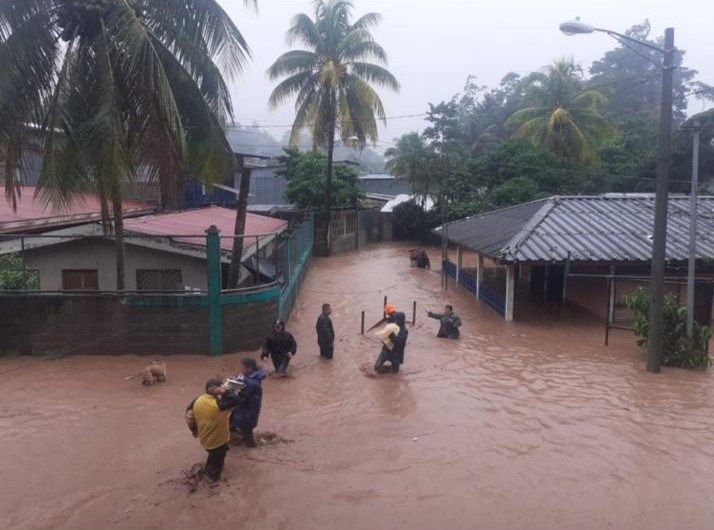
Hurricanes Eta and Iota
A record-breaking Atlantic hurricane season unleashed storms like no other. In November, our emergency response teams raced against time to prepare communities in Honduras, Nicaragua, Guatemala, and El Salvador for Hurricanes Eta and Iota.
Hurricane Eta made landfall in Nicaragua as a Category 4 on November 3. Hurricane Iota then struck — about 15 miles south of Eta — as a Category 4 storm on November 16.
The storms packed powerful winds, gusting more than 140 miles per hour and causing heavy rains, flooding, and mudslides. The two hurricanes impacted over 7.5 million people in Central America.
In 2020, World Vision assisted over 124,000 families in Central America with humanitarian aid, which included COVID-19 protection kits for children and their families. Our pre-positioned supplies worldwide ensured emergency relief teams could respond immediately to disasters, like Hurricanes Eta and Iota.
Pray for people affected by hurricanes and other natural disasters: Almighty Father, we ask for Your care and protection for people affected by catastrophic winds, floods, and landslides. Give survivors the assurance of Your presence and equip aid workers who are providing relief.
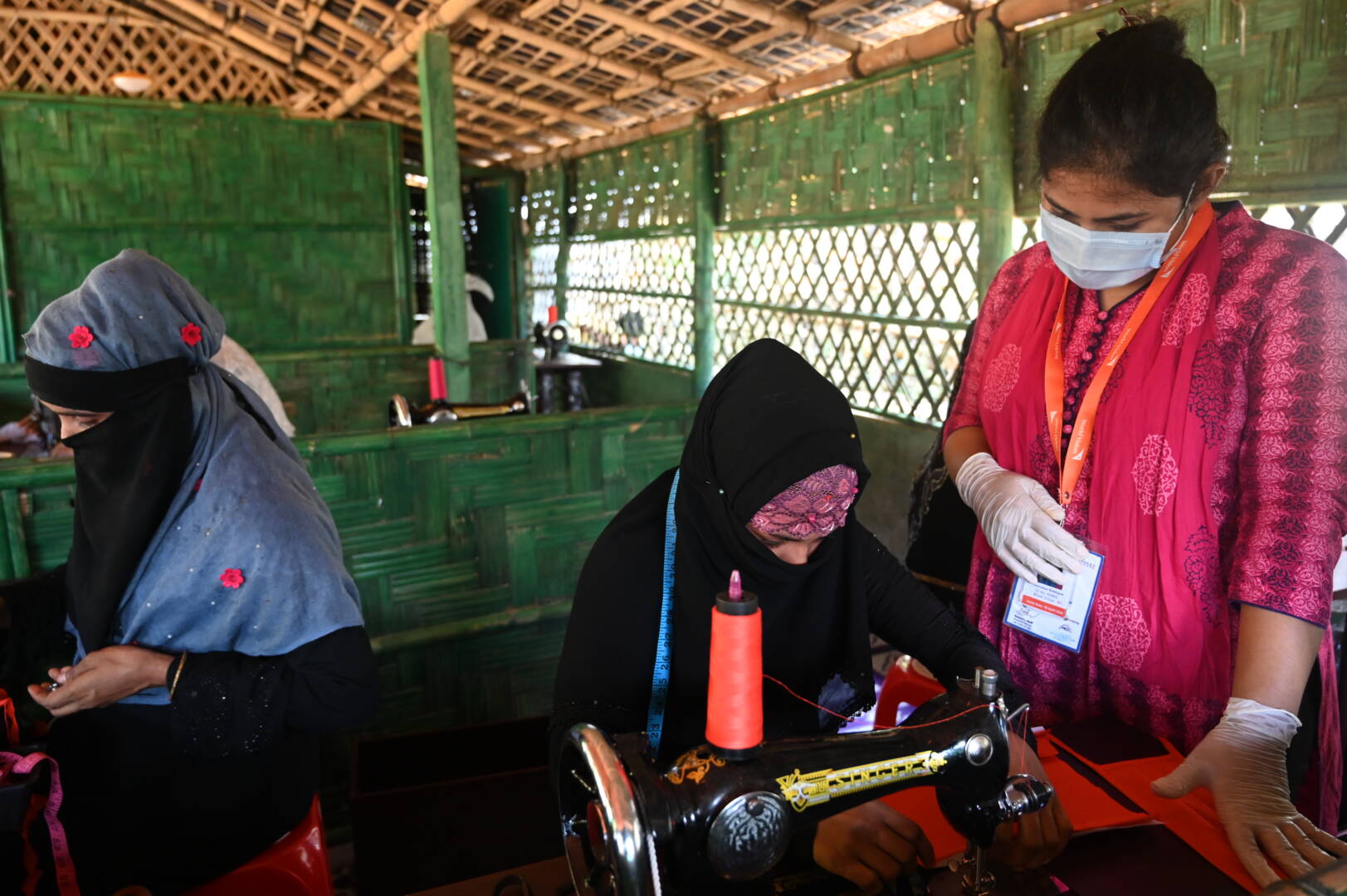
Rohingya refugee crisis
After mass atrocities in Myanmar forced them to flee for their lives, more than 860,000 Rohingya — more than half of whom are children — were still living in limbo in the world’s largest refugee camp, Cox’s Bazar in Bangladesh at the end of 2020. That number has continued to grow since.
COVID-19 precautions and restrictions in the camps, although needed, amplified the extreme protection risks that Rohingya children routinely faced, such as physical and sexual violence, exploitation and abuse, child marriage, child labor, and gender-based violence.
“Before the pandemic, Rohingya children had limited access to any educational services. Now, with learning centers closed and fewer humanitarians accessing in the camps, they have even less protection,” Fredrick Christopher, World Vision’s response director in Bangladesh said in 2020. “Without work, their parents are forced to turn to negative coping strategies, such as marrying their children off or sending them out to work. We know child marriage is on the rise and reportedly children as young as age 7 are working in some camps.”
World Vision continues to work with Rohingya parents, faith leaders, and community members to strengthen community-based child protection. In addition, in 2020, World Vision served more than 498,000 Rohingya refugees, as well as host community residents, with protection and education services, food assistance, maternal and child nutrition programs, water, sanitation, and hygiene (WASH) facilities, and cash-based support.
Pray for Rohingya refugees: Loving Savior, we pray that Your hand protects every child, woman, and man in the Bangladesh refugee camps from diseases such as COVID-19, extreme weather, and hopelessness.
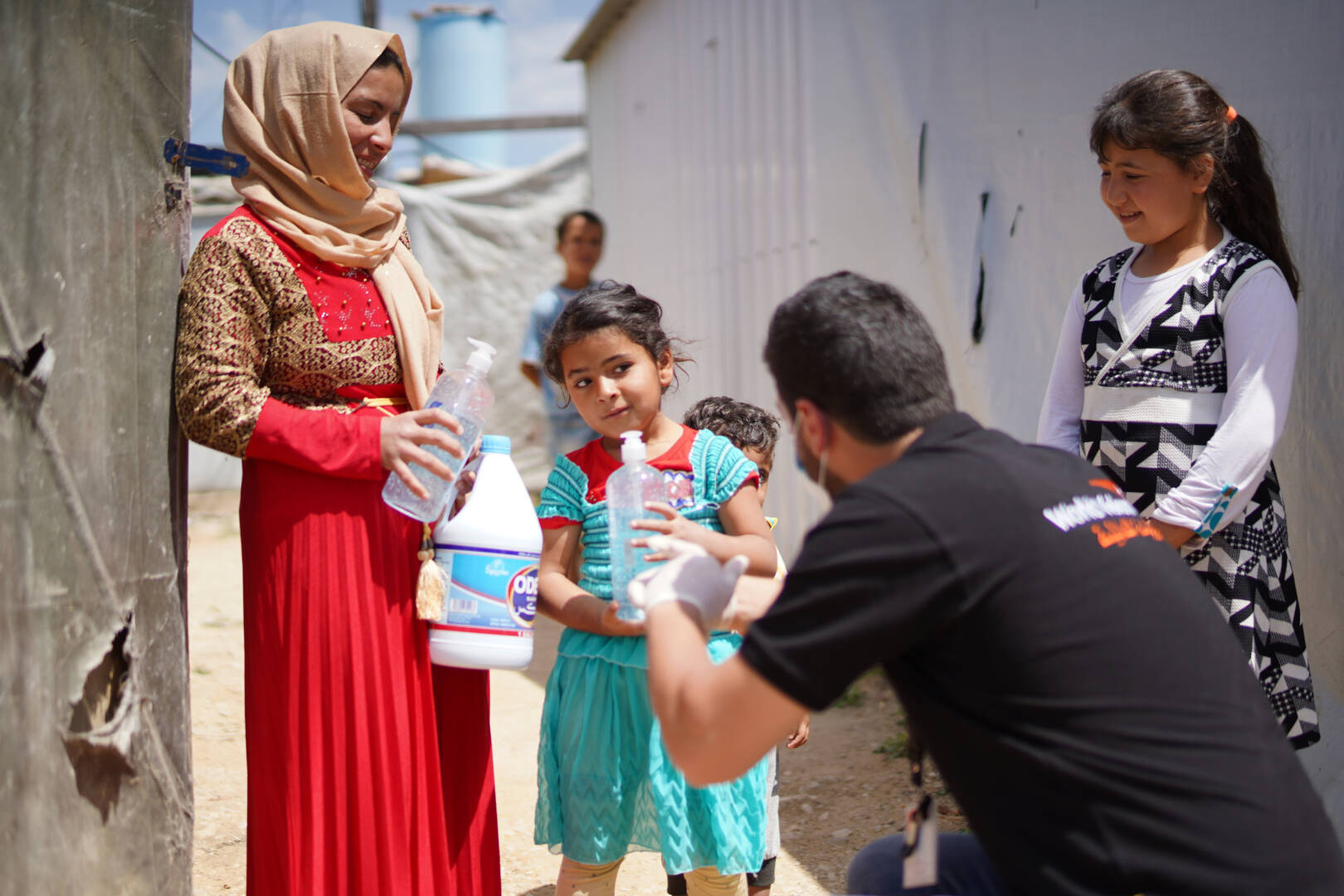
Syria conflict and refugee crisis
Syria is one of the most dangerous places in the world to be a child: Nearly 5 million children have been born into war since the escalation of violence in 2011, as of 2020. As the Syrian refugee crisis enters another year, millions of children are experiencing a second decade of life immersed in war, violence, and displacement. At least 1 million children have been born as refugees in neighboring countries.
“The war and COVID-19 pandemic have destroyed their lives. I wish I could ease their suffering. Being part of World Vision, I have dedicated myself to those people daily,” said Ahlam, a child protection coordinator for World Vision in Lebanon, in 2020.
Swift response to those in need
Since the start of the crisis, we’ve helped more than 7.5 million people in the Middle East with healthcare, psychosocial support, supplies for cold winter months, education programs, food aid, and clean water, sanitation, and hygiene.
Pray for Syrian refugees: Dear Lord, our hearts break for Syrian refugees, for displaced people in Syria, and for all living under the constant threat of violence. We ask that You give the country’s leaders the wisdom and compassion to come to a peaceful solution, so children and their families can return home safely. Lord, for the families who have left Syria, we ask that You comfort them as they grieve for their homeland.
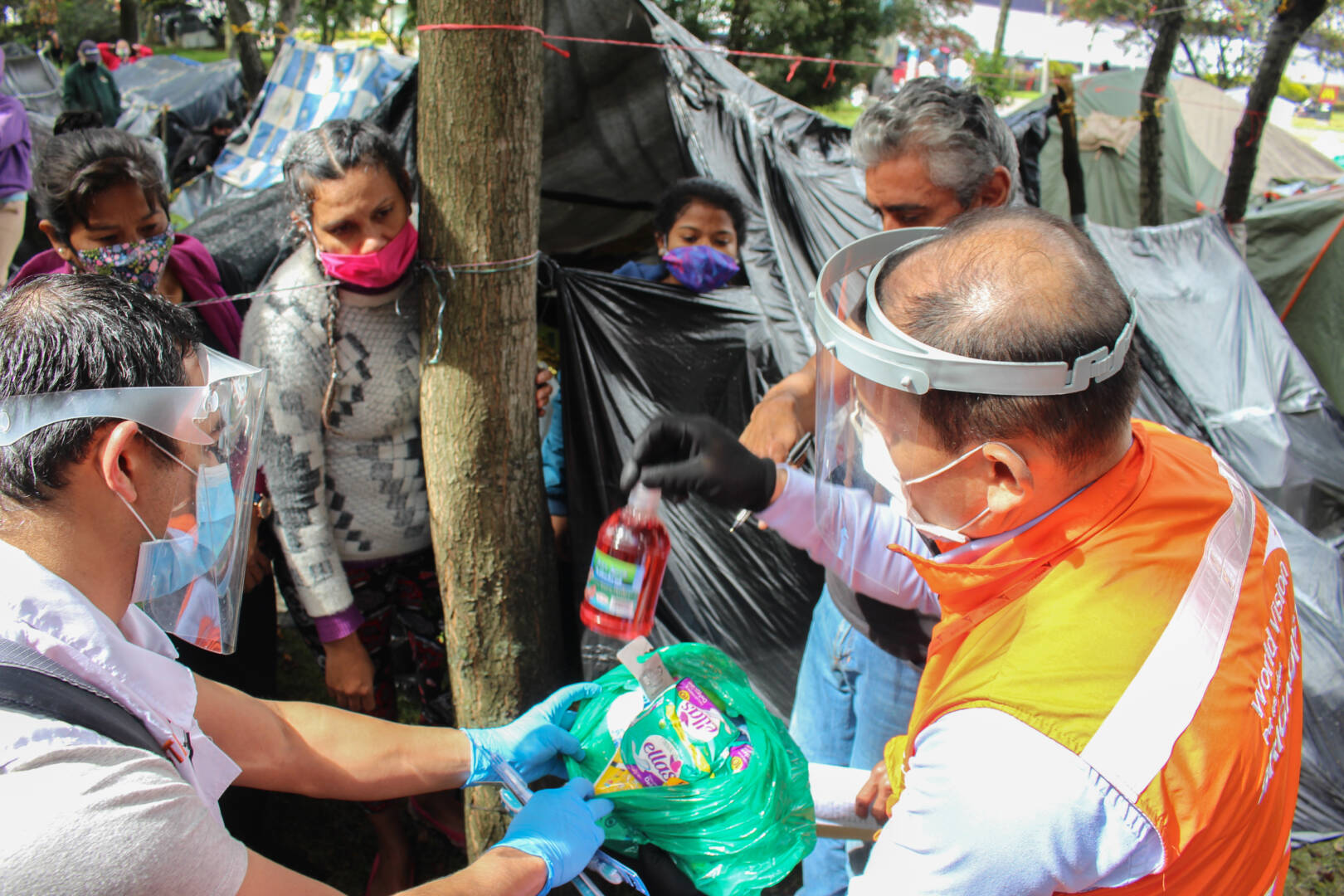
Venezuelan refugee and migrant crisis
Venezuela is one of the most unstable countries in the world. The country’s turmoil has forced millions of people to flee seeking better living conditions elsewhere. The migration has separated at least a million children from their parents.
The largest migration from Latin America is fueled by Venezuela’s collapsed economy, hyperinflation, food and medicine scarcities, and educational shortages stemming from years of political unrest. In 2020, at least 94% of the population lived in poverty. And about 30% were unable to get enough nutritious food. In the same year, an estimated 2 million people migrated to Colombia, Peru, Chile, Ecuador, and Brazil, according to UNHCR.
World Vision has responded to the Venezuelan refugee and migrant crisis since January 2019. By September 2020, we reached more than 411,000 people through programs focused on child protection, education, and food security and livelihoods in Bolivia, Brazil, Chile, Colombia, Ecuador, Peru, and Venezuela.
Pray for Venezuelan migrants, refugees, and asylum-seekers: Lord, families and communities are broken because they have had to flee from hardship. God, please protect people who have fled their homes, especially children, the elderly, and the disabled.
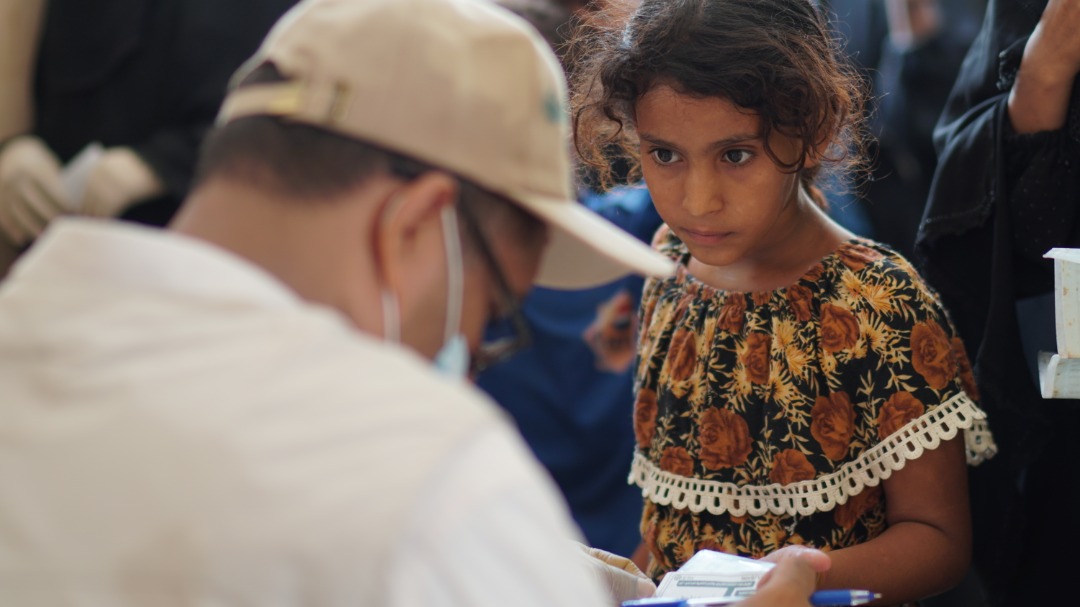
Yemen civil war and food crisis
Civil war besieged Yemen in 2020. Four years of civil conflict and the resulting food crisis created a massive humanitarian emergency. In 2020, more than 22 million people — three-quarters of the country’s population — needed life-saving aid.
In Yemen, the economy collapsed, and food prices skyrocketed. More than 233,000 people, including 12,000 civilians, were killed and more than 3 million displaced.
In 2020 alone, 380,000 people contracted cholera because half of the population lacked regular access to safe water and basic hygiene. People in the worst-affected areas starved to death because of near-famine conditions. And 1.8 million children were suffering from malnutrition, including 400,000 on the very edge of life.
It’s difficult for humanitarian agencies to get aid into the country due to the volatile security situation. In November 2019, World Vision initiated collaborative efforts with the United Nations and other agencies in Yemen to support and care for children affected by the crisis. The primary focus was rehabilitating water points and ensuring access to safe drinking water for 17,500 people.
Pray for peace in Yemen: Heavenly Father, we pray for peace to rule our hearts and lives and that of the children and families in Yemen. Give us Your strength to help lift the hurting, and give us Your mercy and hope.
